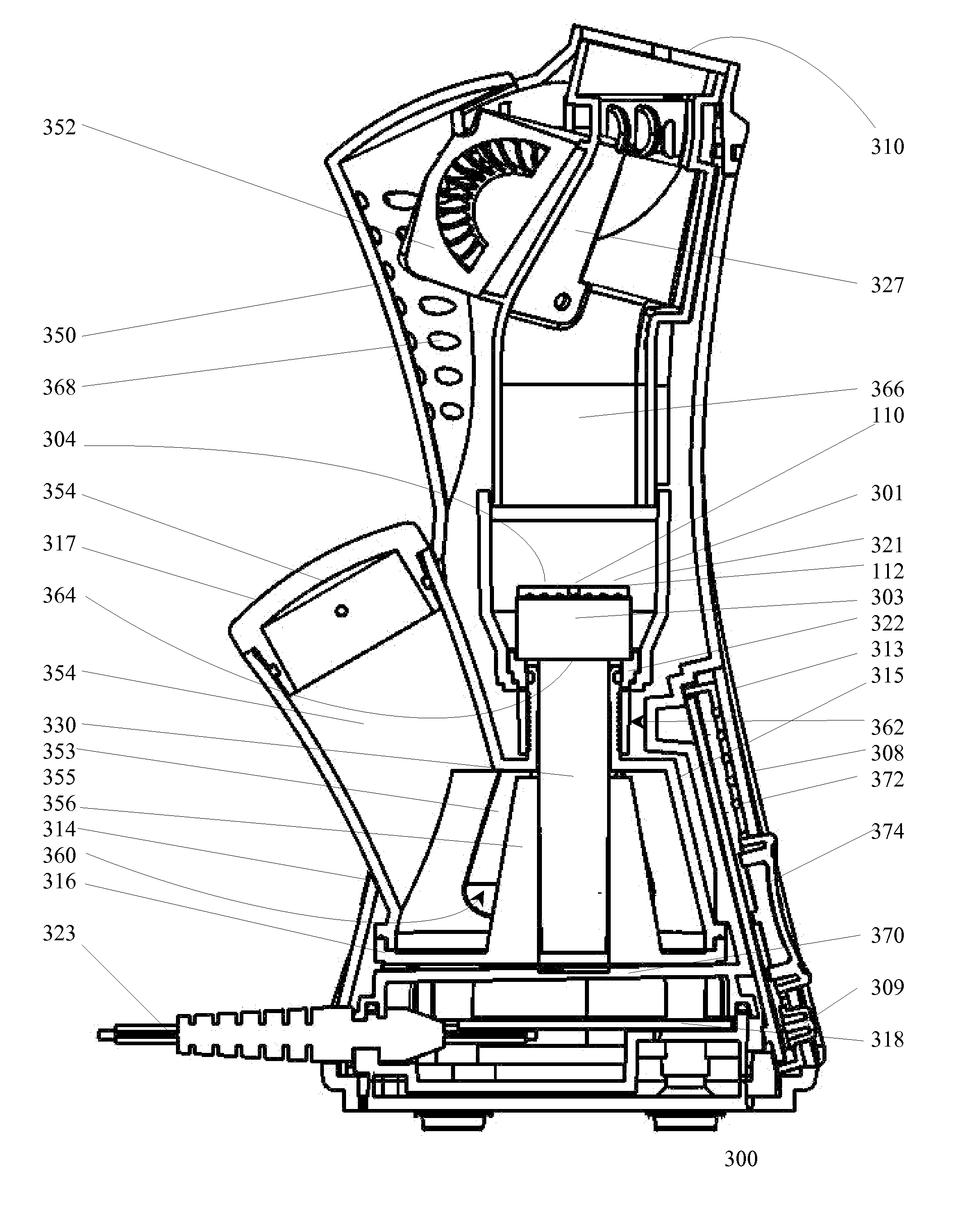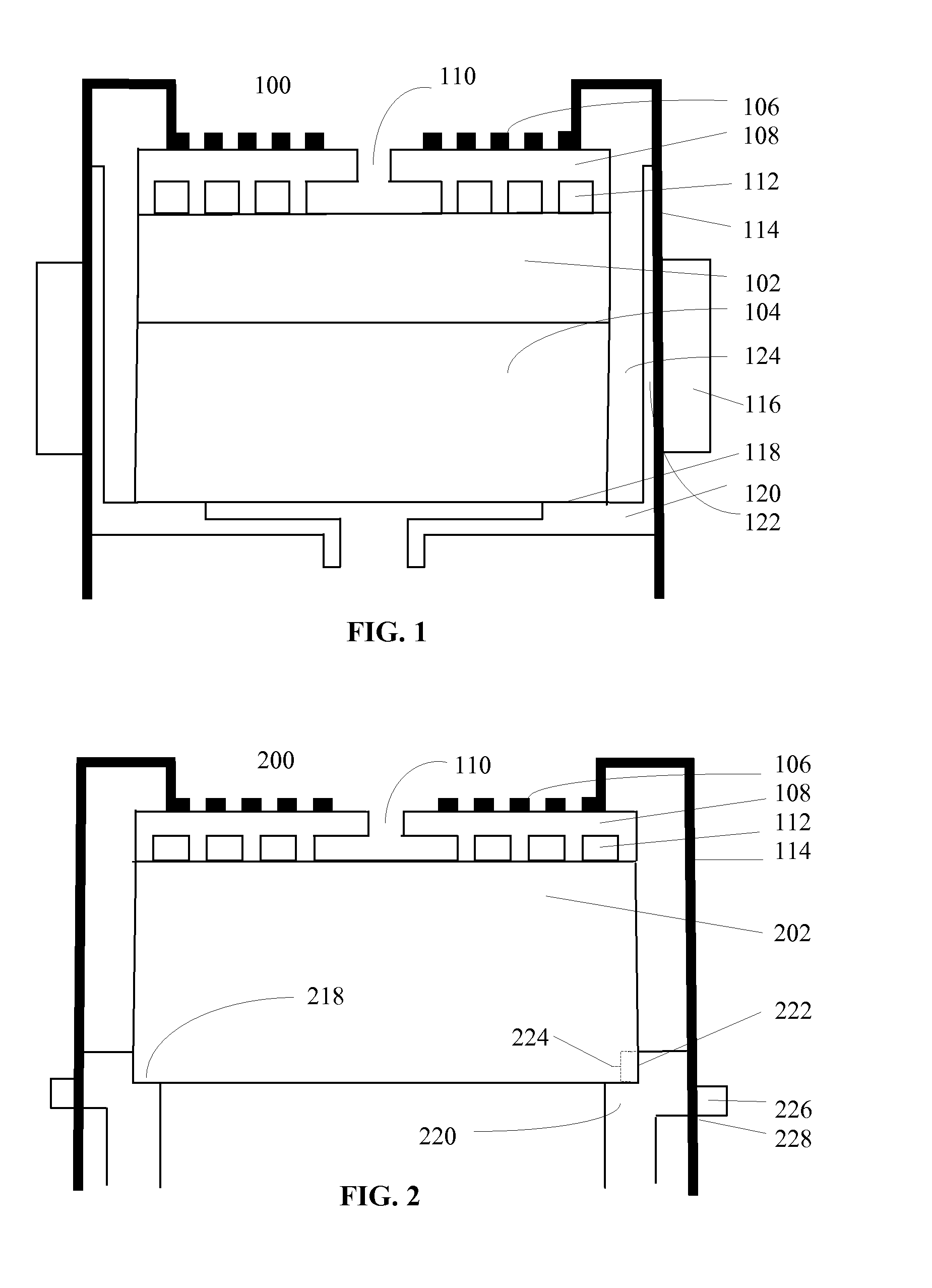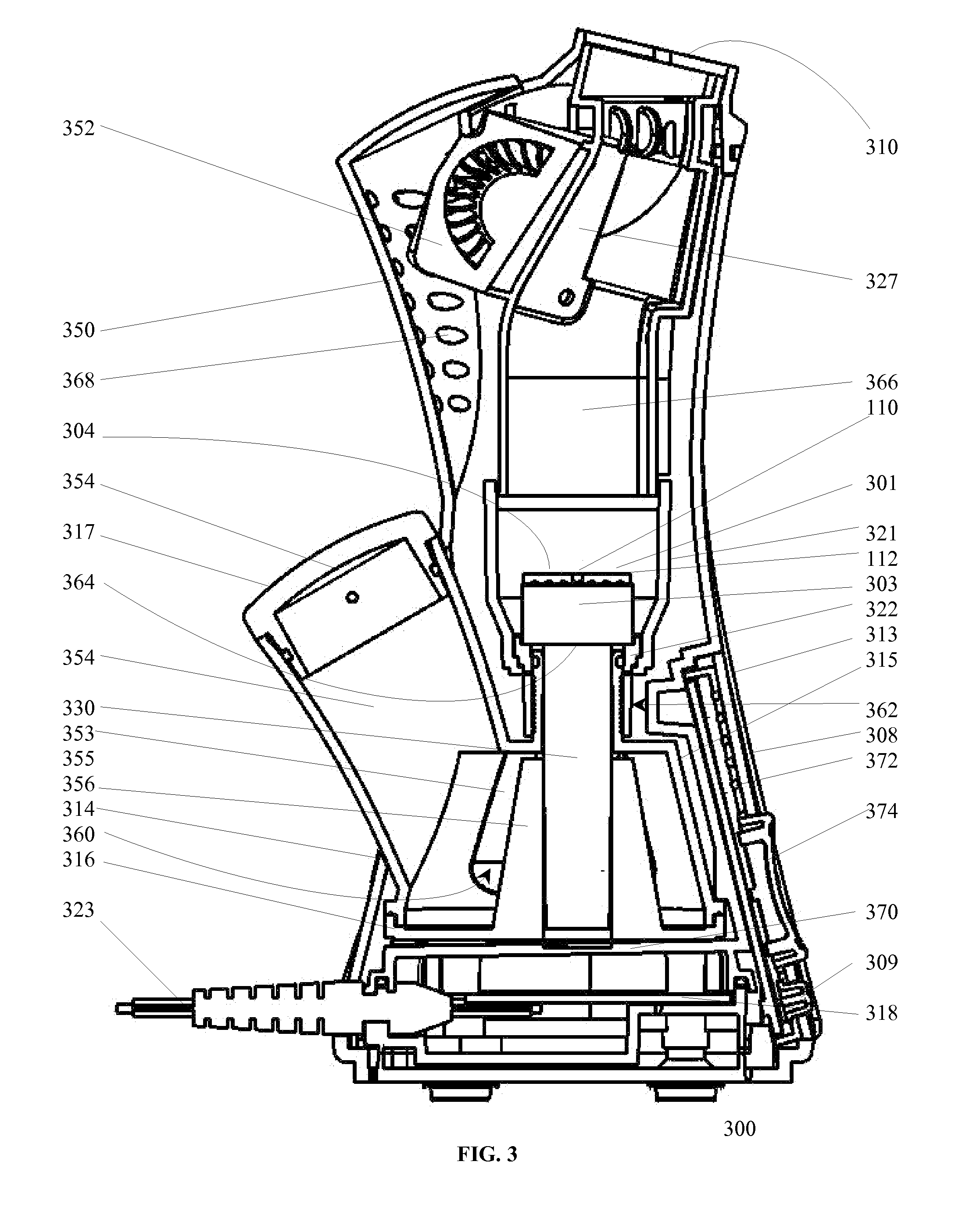Thin Film Capillary Vaporization: Device and Methods
a thin film, vaporization technology, applied in lighting and heating apparatus, heating types, separation processes, etc., can solve the problems of humidifiers with thermal injuries, air inhalation of vapor, and condensation of vapor, etc., to achieve the effect of safe, efficient and quick
- Summary
- Abstract
- Description
- Claims
- Application Information
AI Technical Summary
Benefits of technology
Problems solved by technology
Method used
Image
Examples
examples
[0091]The reserved water energy of several commercial warm mist devices was calculated and compared to the inventive device. Accordingly, a Mabis Steam Inhaler Model 40-741-000 was found to hold approximately 80 ml of water, which was introduced to the device at approximately 20° C. Boiling was affected within about 2.5 minutes of power being applied. The water therefore had a reserved water energy of 4.1855 J / g·° K×80 g×(373.15° K−293.15° K)=26.8 kJ. A Vicks® Personal Steam Inhaler Model V 1200 was found to hold approximately 75 ml of water, which was also introduced to this device at 20° C. Boiling was affectuated within 10 minutes of power being applied. At this point, the water had a reserved water energy of 4.1855 J / G·° K×75 g×(373.15° K−293.15° K)=25.1 kJ. A Walgreens Personal Cough & Cold Steam Inhaler, Model FSA88 (Item Number 809729) was found to hold approximately 60 ml of water, which was also introduced at 20° C. Boiling was affectuated within about 5 minutes of power be...
example 2
[0100]Eight commercially available humidifiers were evaluated for efficacy against both bacteria and fungus and the results were compared to the performance of a thin film device according to the present invention. The prior art room humidifier devices that were used are listed here and summarized in Table 1, along with the type of mist generated—designated either cool or warm—and any mechanisms used to control germs. The prior art room humidifier devices that were used were: 1) a Vicks® Model V745A warm mist humidifier; 2) a BROOKSTONE Germ-Free Humidifier with UV Sanitizing, a cool most humidifier that includes a UV light; 3) a Kaz HWLV790, an ultrasonic cool mist humidifier that includes a UV light; 4) a HONEYWELL HCM-350 Germ Free Humidifier, an ultrasonic cool mist humidifier that includes a UV light; 5) a PLASTON Air-O-Swiss Model 7135, a cool mist humidifier with silver ion technology to control microbes; 6) a WACHSMUTH & KROGMANN Crane® EE series ultrasonic cool mist humidif...
PUM
| Property | Measurement | Unit |
|---|---|---|
| height | aaaaa | aaaaa |
| height | aaaaa | aaaaa |
| height | aaaaa | aaaaa |
Abstract
Description
Claims
Application Information
 Login to View More
Login to View More - R&D
- Intellectual Property
- Life Sciences
- Materials
- Tech Scout
- Unparalleled Data Quality
- Higher Quality Content
- 60% Fewer Hallucinations
Browse by: Latest US Patents, China's latest patents, Technical Efficacy Thesaurus, Application Domain, Technology Topic, Popular Technical Reports.
© 2025 PatSnap. All rights reserved.Legal|Privacy policy|Modern Slavery Act Transparency Statement|Sitemap|About US| Contact US: help@patsnap.com



